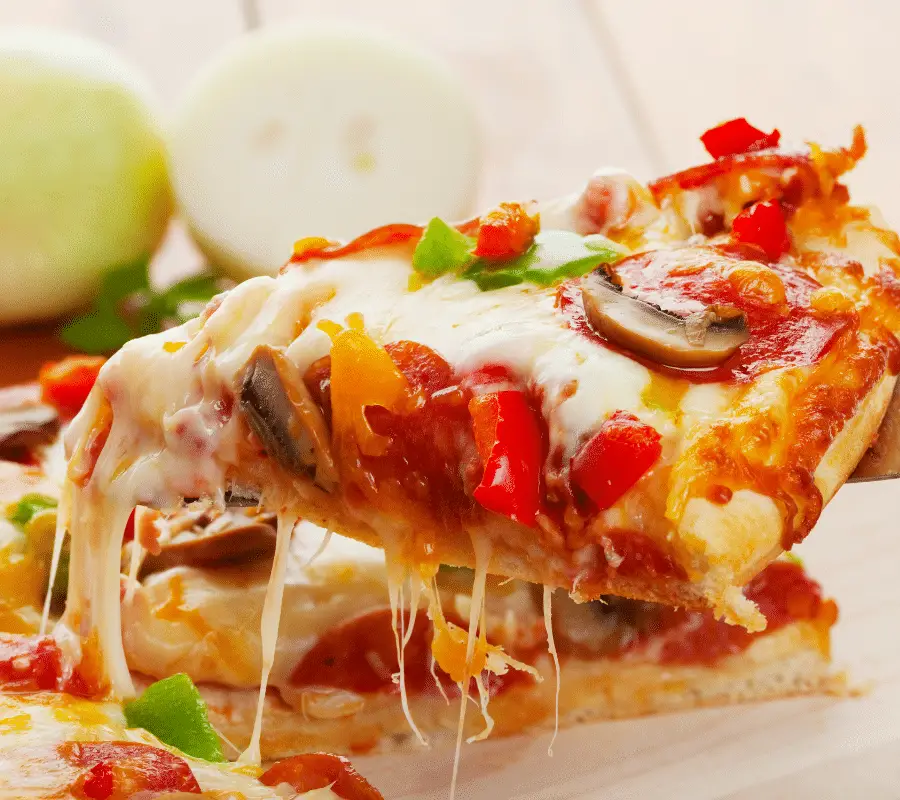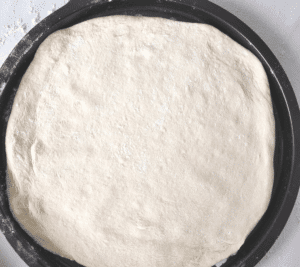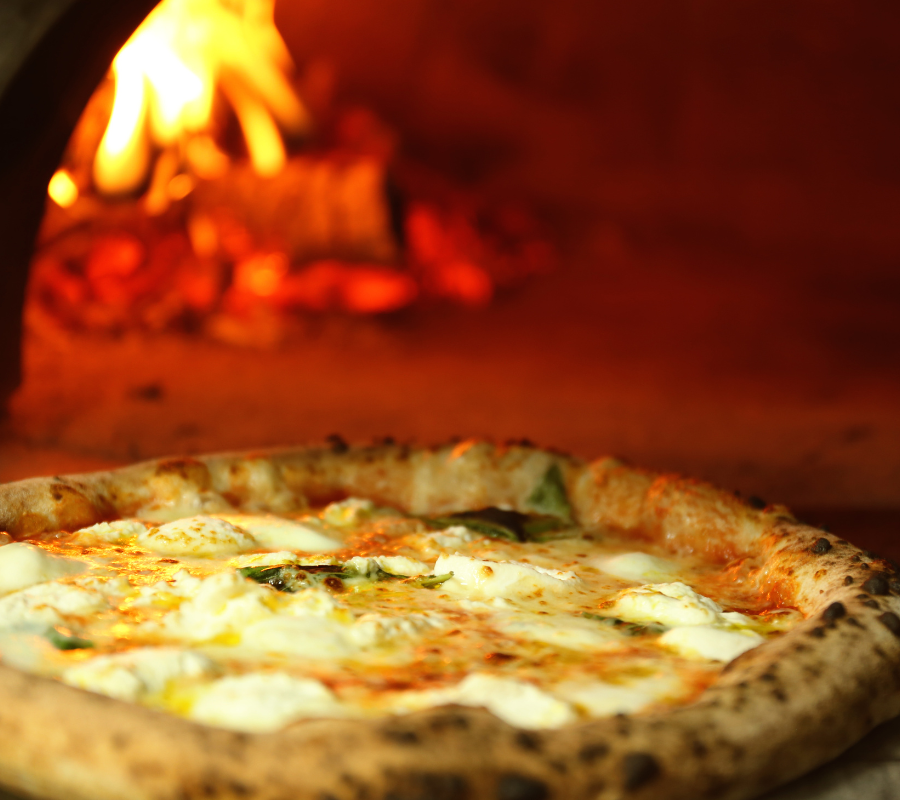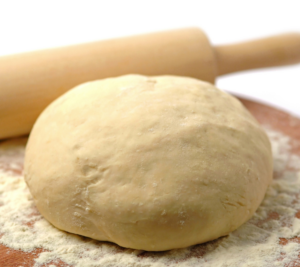The Best Temperature for Perfect Homemade Pizza
What is the Temperature to Cook Homemade Pizza?
The best temperature to cook homemade pizza in a domestic oven is about 250°C/(500°F) or 220°C to 230°C Fan . This temperature is only half of what a traditional wood-fired pizza oven can reach, which is over 500°C (900°F). However, turning up the domestic oven to its maximum temperature can get you as close as possible to the real thing.
It is important to note that the cooking process will be slightly different at lower temperatures. Therefore, if you want to achieve the perfect crust, it is recommended to cook the pizza at the highest temperature possible.
For gas mark ovens, the best temperature is about gas mark 9. If you have a fan-assisted oven, it is essential to turn on the fan to improve the airflow and increase the overall temperature inside the oven.
For those who have a pizza oven at home, the optimal temperature will be much higher than 250°C.
To achieve a delicious homemade pizza with a perfect crust, it is recommended to cook it at the highest temperature possible in a domestic oven, which is about 250°C (500°F).

Won’t It Damage My Oven Turning It Up That High?
There is no need to worry about turning up your oven to its maximum temperature as it is designed to handle high temperatures safely. Domestic ovens, just like all other ovens, are built with safety in mind.
Even when set to its highest temperature, your oven will still be operating within a safe working temperature. It is important to note that oven manufacturers may limit the maximum temperature by up to 100 degrees to prevent the oven from breaking before its designed lifespan. For best results, turn on the fan if your oven has one.
Why Pizza is Cooked at High Temperature
Pizza is typically cooked at a high temperature, and for good reason. The high temperature ensures that the pizza has a crispy crust, soft interior, and improved flavour. Additionally, cooking at high temperatures allows for the toppings to be cooked through, the cheese to be melted and evenly distributed, and the sauce to be cooked properly.
If you have ever had a traditional pizza cooked in a wood-fired oven, you know that the crust is crispy yet soft, and the dough has depth of flavour. Cooking pizza at high temperatures ensures the best rise out of the crust, resulting in the perfect pizza.
Fortunately, it is possible to cook delicious pizza in a normal domestic oven by following some simple advice. The perfect crust is crispy on the outside and soft in the middle. By cooking pizza at high temperatures, pizza lovers can enjoy a delicious pizza with a crispy crust and perfectly cooked toppings.

Do I Need to Preheat My Oven Before Cooking Pizza?
Preheating the oven is crucial when it comes to cooking pizza. It is recommended to preheat your oven at maximum temperature for at least 30 minutes. This may seem like a long time, but it takes a while for your cooking surface to get up to temperature. It is also important to preheat your oven with your baking tray or pizza stone inside.
Although your oven may reach the desired temperature in about 10 minutes, your pizza stone or baking tray will take much longer. Therefore, it is essential to preheat your oven to ensure that your pizza cooks evenly and thoroughly.
What is a Pizza Stone and Do I Need One?
A pizza stone, also known as a baking stone, is a thick cooking surface used to cook pizzas and bread. These stones are typically made of ceramic or stone, but there are also pizza steels available that are more durable but more expensive.
While it’s true that a pizza stone is not necessary to make delicious pizzas, it can significantly improve the quality of your homemade pizzas.
One of the benefits of using a pizza stone is that it holds heat extremely well. As soon as the pizza hits the cooking surface, the temperature of the stone reduces, but the drop in temperature is much lower than that of a regular baking tray. This allows the pizza to cook more evenly and achieve the desired crispiness.
A good quality pizza stone can help achieve a crispier base and crust, and it’s impossible to write about the best temperature to cook a homemade pizza without mentioning a pizza stone. It is highly recommended to get one, especially if you intend to cook loaves of bread as well.

Can I Use My Baking Tray Instead?
If you don’t have a pizza stone, using the back of a baking tray can be a good alternative. Turning the tray upside down will make it easy to get your pizza on and off it, and it will work just as well, if not better. However, when using a baking tray for the first time, it is a good idea to lightly flour it. This will ensure that your pizza does not stick to the tray.
It’s important to note that fresh pizza dough needs a flat, hot surface to cook properly. Don’t be tempted to put your homemade pizza straight on the grill rack. Shop-bought pizzas that have been pre-cooked may cook okay like this, but fresh dough pizzas will not. Also, your pizza won’t stick to the rack, and you won’t get cheese dripping into the bottom of your oven.
Using a laser thermometer is particularly helpful when using a pizza oven, but it is also useful for a normal oven. If you want to achieve the perfect pizza, the ideal temperature is 260 degrees Celsius (500 Fahrenheit). This is the hottest that most ovens can get.
In summary, while using a baking tray is a good alternative to a pizza stone, it’s important to ensure that the tray is lightly floured to prevent sticking. Additionally, fresh pizza dough needs a flat, hot surface to cook properly, so avoid putting it straight on the grill rack.

Where to Place the Pizza Stone or Baking Tray in the Oven
The best place to put your pizza stone or baking tray is typically where your oven is the hottest. For most domestic ovens, this is the top of the oven. However, it is important to note that every oven is different.
A good starting point is to place the pizza stone or baking tray about 6 inches from the top of the oven. This will allow the pizza to cook evenly and quickly. However, it is recommended to experiment with the placement to find what works best for your oven and pizza.
Moving the pizza stone or baking tray down a little may give you a more even cook. Therefore, it is important to keep an eye on the pizza while it’s cooking and adjust the placement if needed.
How to Place a Pizza in the Oven
Once the pizza is shaped and the oven is preheated, it’s time to place the pizza inside the oven. However, it’s essential to act quickly, as the temperature inside the oven can drop rapidly once the door is opened. To minimize the time the oven door is open, it’s recommended to load the pizza onto a pizza peel before opening the oven door.
A pizza peel is a flat, shovel-like tool used to slide the pizza onto the oven floor. Place the pizza on the peel and add any desired toppings. Then, open the oven door and slide the pizza onto the oven floor using the peel.
It’s important to note that the oven floor should be preheated and dusted with cornmeal or flour to prevent the pizza from sticking. Once the pizza is inside the oven, close the door quickly to maintain the temperature.
By following these steps, you can ensure that your pizza is placed in the oven quickly and efficiently, resulting in a perfectly cooked pizza with a crispy crust.
What is a Pizza Peel and Do I Need One?
A pizza peel is a tool used to transfer pizzas or bread into and out of the oven. It is a wooden board or metal plate with a handle that makes it easy to quickly transfer pizzas to the cooking surface without affecting their shape or burning oneself.
The traditional Neapolitan pizza is stretched again as it is dragged onto the peel after topping the pizza, and just before it is loaded into the oven.
Although a pizza peel is a great investment, it is not essential. One can use a flat baking sheet or a wooden cutting board as an alternative. However, a pizza peel can make the process of transferring pizzas to the oven much easier, and it is a useful tool to have for those who frequently make pizzas at home.
Can I use an alternative to a pizza peel?
If you don’t have a pizza peel, a chopping board can be used as an alternative. It’s recommended to use a wooden or glass chopping board instead of a plastic one as it may melt when it comes into contact with the hot surface. Make sure to lightly flour the peel or chopping board to avoid the pizza sticking to it.
How long should I cook my homemade pizza for?
Cooking a homemade pizza can be a bit tricky, but there are some general guidelines that can be followed to achieve a perfectly cooked pizza.
The cooking time usually takes about 6 – 15 minutes in a regular domestic oven, but this can vary depending on several factors.
The cooking time of a homemade pizza depends on the maximum temperature of the oven, whether it is fan assisted or not, the thickness of the pizza, where it is placed in the oven (top, middle, or bottom), and whether a pizza stone is used or not.
As a result, it is difficult to give an exact time for cooking a homemade pizza, and it mainly comes down to trial and error. I like my pizza well done so I keep mine in for about 15 to 17 minutes.
Keep Checking
To ensure that the pizza cooks properly, it is recommended to stay at the oven whilst the pizza is cooking and keep checking it. However, it is important to avoid opening the door too much, as this will cause the temperature inside the oven to drop. If the oven door has a window, then the pizza can be easily checked through this.
Timing the pizza is helpful for future reference. It is recommended to leave the oven door shut for at least 4 – 5 minutes initially to ensure that the base cooks properly.
The timer should be started as soon as the pizza goes in, and the door should be opened to check it after 4 – 5 minutes. At this point, the pizza should be mostly cooked but may need to be turned 180 degrees to ensure even cooking.
Usually, the pizza cooks more at the back of the oven, but this may vary depending on the oven. It is recommended to turn the pizza as much as needed towards the end of the cooking to ensure even cooking. However, the oven door should not be left open during this process.
How to Determine When Homemade Pizza is Cooked
There are two ways to determine when homemade pizza is cooked. First, the crust should be slightly browned and the cheese/toppings should be cooked. However, it is important to note that every oven will yield different results, so checking the colour of the crust is not always reliable.
The second way to determine if the pizza is cooked is by feeling the crust. The cooked pizza crust should be very firm and crispy to the touch. It is recommended to check the crust every time you turn the pizza, which only takes a second. Once the pizza is removed from the oven, it will start to cool, and the crust will soften slightly. However, this should not be a concern as the crust will still be crispy.
It is important to note that it is possible to overcook a pizza. Determining when a pizza is perfectly cooked may take some trial and error. However, the more pizzas you cook, the better you will get at determining when they are done.
After cooking the pizza, it is recommended to let it cool for a few minutes before serving. This will allow the crust to soften slightly and prevent anyone from burning their mouth. Remember, cool pizza is always better than red hot pizza.